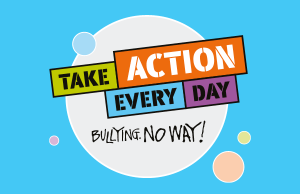Bullying No Way: National week of action
Hi families,
Next week St Augustine’s is participating in the Bullying No Way: National week of action, on the 12th to 16th August 2024.
Bullying No Way Week is a commitment being made by thousands of schools and supporters across the country. It provides an opportunity to demonstrate our commitment to bullying prevention.
The theme for this year’s campaign is Everyone belongs. This theme highlights the importance of creating a sense of belonging and inclusion for students. We recognise bullying often thrives in environments where individuals feel marginalised or excluded, and it is our collective responsibility to ensure that every student feels valued and respected.
During the week we will be engaging students in meaningful discussions and activities aimed at promoting empathy, understanding, and respect for diversity. We encourage parents and carers to take this opportunity to have open and honest conversations with their children about the impact of bullying and what they can do if they need support. You can visit the Bullying No Way website for tips around how to have this discussion.
You can access the school’s bullying prevention policy to learn more about our process for preventing and responding to bullying. Click on the link below to access this.
Happy reading ,
Ms Jodie

Bullying – important conversations to have with your child
Parents and carers play an important role in helping your child understand bullying, and know how to respond to it.
If your child tells you about things at school, or you observe something in public that involves conflict or bullying, take the opportunity to talk about what bullying is. You can learn more about what defines bullying at bullyingnoway.gov.au.
Questions you could ask:
- What do you think bullying is?
- Have you seen it? How did you feel?
- Have you ever felt scared at school because of bullying?
- As well as me, who are the other adults you would talk to when it comes to things like bullying?
- Have you or your friends left other kids out on purpose? Do you think that was bullying? Why or why not?
- Have you ever tried to help someone who is being bullied? What happened? What would you do if it happens again?
Remind your child that bullying is never okay and discuss how they can respond safely if they experience or witness it.
Encourage them to seek help from a trusted adult and keep seeking support if needed.
By promoting open communication, we empower children to stand up against bullying and create a safer environment where everyone can feel that they belong.



